
Why Eichlers in Palo Alto Have Room for Hope
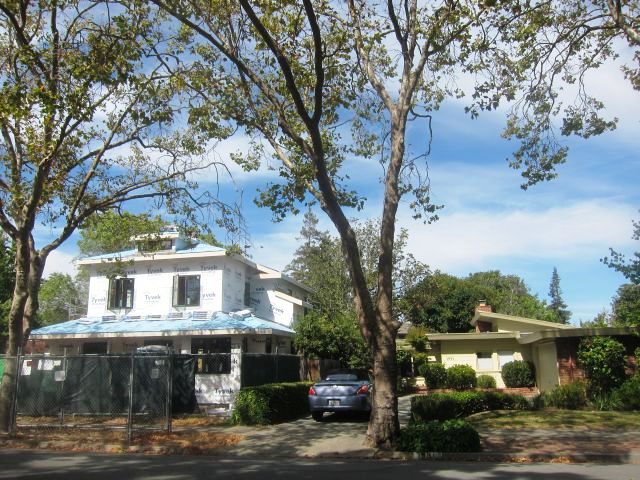 |
|
|
Throughout Palo Alto, and in some neighboring towns, folks who love Eichler homes and hope to keep them intact have grown increasingly fearful of monster homes.
Godzillas, these homes seem to be, taking out one home by the Eichler Swim Center, another on Richardson Court, an early semi-custom home in Atherton that sat right across from Joe Eichler’s own home, and others as well.
But some observers of the scene see a ray or two of hope. For one thing, they say, Eichler homes may have a built-in protection that few of Palo Alto’s other homes possess. An Eichler home, by and large, is not an individual standing by itself.
It’s got friends and those friends have its back.
“Eichler houses, because they’re all the same and because Eichler laid out the streets so effectively, they have that close knit feeling,” says Margaret Feueur, a longtime Palo Alto preservationist.
“Kids could play in the streets and cars could come along and nobody gets run over,” she continues. “There’s more of a sense of community in Eichler neighborhoods (than other neighborhoods in town), so they can be more successful (in staving off development pressure). Other neighborhood don’t have that, the neighborhoods in Old Palo Alto.”
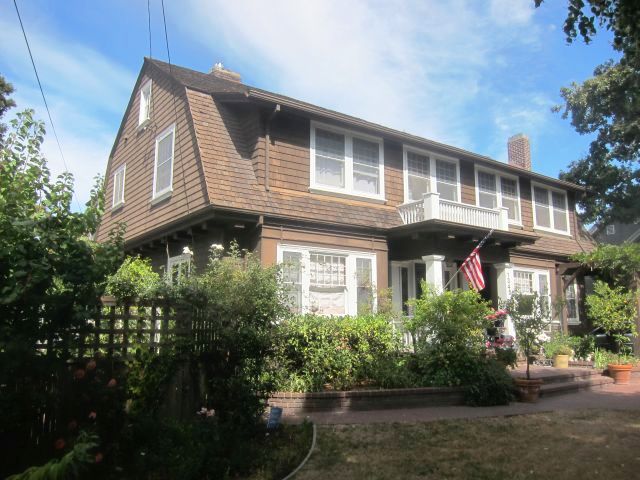 |
|
|
Whenever an Eichler home gets torn down or remodeled out of existence, it’s easy for mid-century modern fans to feel aggrieved. But, as Feuer observes, modern homes are not the only victims of the current Silicon Valley teardown craze.
“The pressure is on everywhere. And other neighborhoods are less organized than Eichler neighborhoods.”
“Eichlers have become special because of the type of the houses, and they have been successful in getting single story overlays. They have much more of a chance than an isolated Spanish Colonial in central Palo Alto.”
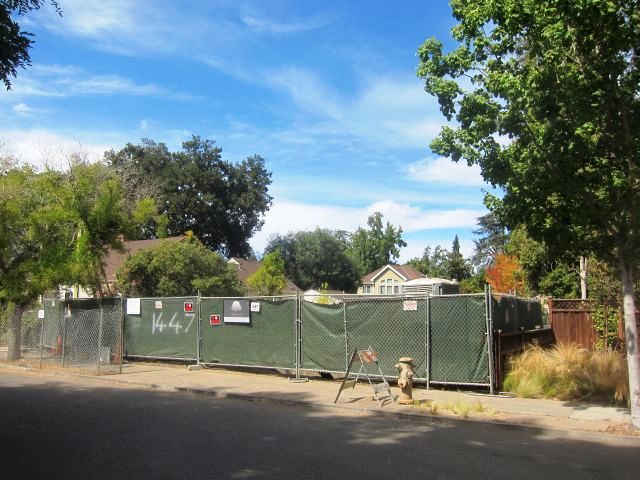 |
|
|
Eichlers also have more of a chance at preservation than similar but standalone mid-century modern homes, as author Susan Cerny points out.
“One of the things I have thought about a lot is that the prototypes of some of the Eichlers, like (architect Joseph) Esherick's own house in Kentfield from 1948-9, with its big, wide gable over the entry, as well as many other early mid-century houses in Kentfield, have been torn down and replaced, and that it is easier to preserve a neighborhood of Eichlers than individual houses,” says Cerny author and editor of ‘An Architectural Guidebook to San Francisco and the Bay Area.’
Feuer, who writes about notable local houses, including on at least one occasion, Eichlers, for Palo Alto Stanford Heritage, where she is a former president, has taken part in several preservation battles over the years.
“I do think Palo Alto is very bad on preservation,” she says, “because there is so much wealth coming into the community, not only for buying these houses but buying them for investments.
Development pressure on even some of Palo Alto’s most attractive Period Revival houses – the kind Feuer and her husband Mike inhabit – has gotten so bad she’s had nightmares about it.
“I was selling my house and I wanted $4 million,” she describes the dream. ‘A nice couple wanted to buy it but they said they wanted to knock it down and subdivide the lot. I said no, I don’t want that.
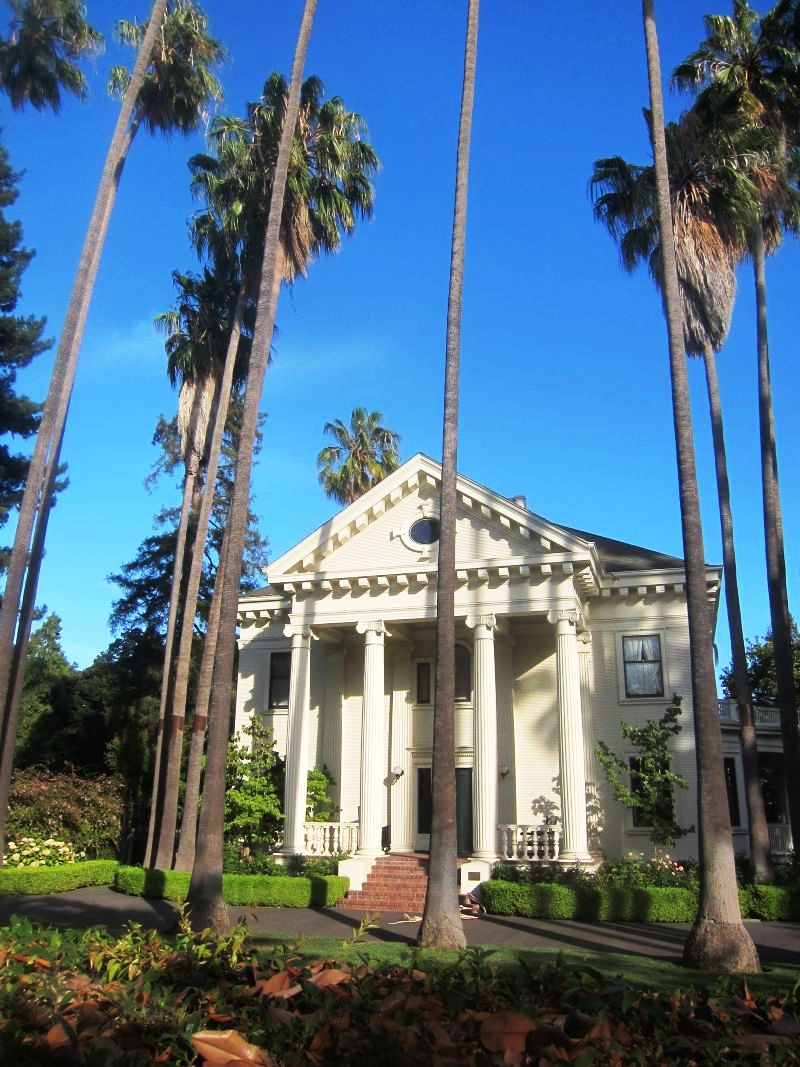 |
|
|
“In my dream they came back and said, ‘Would you be interested if we offer you $8 million?’ I woke up in a cold sweat. That is basically what is happening with people my age who live in these houses. It could be a Birge Clark house,” she says, mentioning the architect who helped define the city’s look and is a local legend. “It’s what’s happening.”
For many years, Feuer says, Palo Alto was governed by a City Council regarded as pro-development. But, she says, “The new City Council is a bit more anti-development. In that sense they’re more toward what the residents have wanted.”
Frank Ingle, who is fighting to preserve the Eichlers on Richardson Court, agrees. “It’s more pro-neighborhoods now, as opposed to pro- development before.”
He already sees a greater willingness on the part of city staff to heed guidelines designed to preserve neighborhoods. “I do think there is a new sheriff in town,” he says, but adds that several members of the council remain more interested in development than in protecting neighborhood integrity.
Feuer, who’s been in town since the 1980s and worked as a housing remodeler and builder, has a long view on the topic. She recalls in the 1980s when a plan to demolish the landmark Squire house on University Avenue, a Neo-Classical plantation, led to the creation of the city’s historic preservation ordinance.
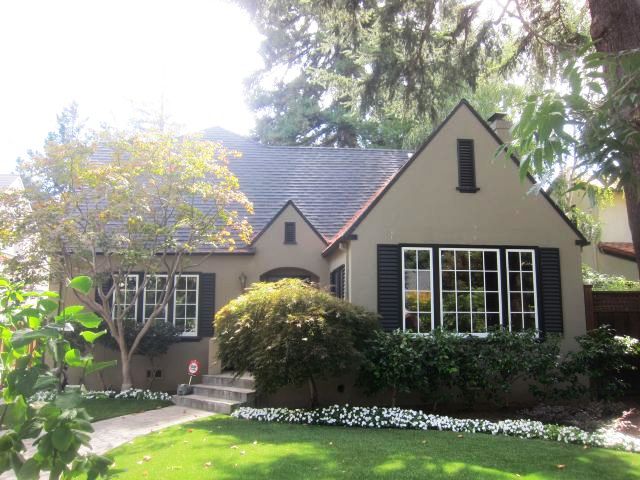 |
|
|
But a few years later, she says, efforts to preserve pre-1940s houses through historic designation “went down in flames.”
“That ended the momentum for preservation,” she says. “Then the city council focused more on development, on creating Palo Alto as a hub city. You’d think they would have learned a lesson from San Jose.”
But the tide turned in favor of the political faction folks in town call “the Residentialists” in 2013, when a voter revolt – Measure D—blocked a plan to build senior housing that opponents argued would harm already stressed neighborhoods.
“The neighbors got it squashed. There was a general feeling in the neighborhoods that they were being overwhelmed,” Feuer says.
“That Measure D kind of coalesced people,” she says. The recent election made the Residentialists a slim council majority.
As a result, about the people trying to preserve their Eichler neighborhoods, she says, “I think the time is ripe. This is a good time for these guys to be trying.”
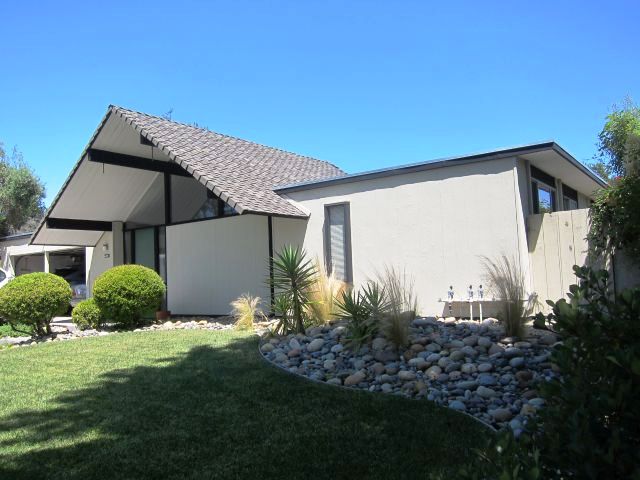 |
|
|
- ‹ previous
- 649 of 677
- next ›



